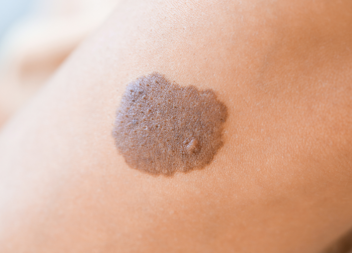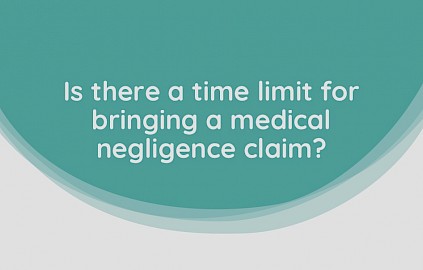WHAT IS SKIN CANCER?
Skin cancer is the abnormal growth of skin cells in the outermost skin layer known as the epidermis. Damage to the epidermis can lead to mutations of the skin’s DNA causing the cells to multiply rapidly and out of control leading to malignant tumours.
WHAT CAUSES SKIN CANCER?
Two main causes of skin cancer are excessive exposure to the sun’s harmful ultraviolet rays and the overuse use of UV tanning beds. Whilst a certain amount of exposure to daylight/sunlight each day is good for you. Sun exposure helps build up vitamin D stores in your body, which is essential to your health. However, clearly there is a balance to be struck and it’s important to be careful not to overdo it.
SO, WHAT IS ULTRA VIOLET RADIATION?
UV Radiation is the natural energy produced by the sun. Whilst not visible to the eye, you can feel the warmth of UV wavelengths on your skin. Tanning beds also emit UV radiation.
There are two types of UV radiation: –
Ultraviolet A – this has a longer wavelength and causes skin to age.
Ultraviolet B – this has a shorter wavelength and can cause the skin to burn.
Both types of ultraviolet rays, harm the skin. They can also cause eye damage, such as cataracts and eyelid cancers. The damaging effect builds up over time.
HOW CAN SKIN CANCER BE PREVENTED?
Cover up!
The risk of skin cancer can be greatly reduced by taking steps to protect your skin from UV radiation by taking simple steps such as wearing protective clothing, using sun cream with a good Sun Protection Factor ( SPF) and avoiding long spells in the sun. Avoid getting sunburnt! Your skin will thank you for it and you will look younger too.
WHAT DOES THE SPF NUMBER MEAN ON YOUR SUNCREAM LOTION?
Ever wondered what the Sun Protection Factor on your favourite suntan lotion means? The SPF number tells you how long it will take for your skin to redden from the UVB rays when using the sunscreen, as compared to how long it would take without sunscreen. The higher the number , the longer your protection from the sun. But remember to reapply after you have been swimming.
HOW COMMON IS SKIN CANCER?
According to Cancer Research UK, skin cancer has had a 150% surge in skin cancer deaths since the 1970s. In the UK around 16,200 people are diagnosed with melanoma, a form of skin cancer , each year, making skin cancer the fifth most common cancer in the UK.
ARE THERE DIFFERENT TYPES OF SKIN CANCER?
There are many different types of skin cancer but they are mainly split into the category of non melanoma or melanoma skin cancer.
WHAT IS NON MELANOMA SKIN CANCER?
This type of skin cancer can appear as a lump or discoloured patch on the skin that persists over a few weeks and slowly progresses over months or perhaps years. Cancerous lumps tend to be red and firm, whereas, cancerous patches are usually flat and scaly.
Non melanoma skin cancers usually appear on parts of the skin which are exposed to the sun. They develop in the outermost layer of the skin and are often named after the type of skin cell from which they have developed
WHAT ARE THE CAUSES OF NON MELANOMA SKIN CANCER?
Other than overexposure to ultraviolet light and tanning beds, causes of non melanoma skin cancer include a previous non melanoma skin cancer, a family history of skin cancer, pale skin that easily burns, a large number of moles or freckles, an underlying medical condition that suppresses your immune system or taking medicine that suppresses your immune system.
The two most common types of non melanoma skin cancer are Basal cell carcinoma and Squamous cell carcinoma.
Basal cell carcinoma, also known as rodent ulcer starts in the cells lining the bottom of the epidermis. This accounts for approximately 75% of skin cancers.
What does it look like?
It can appear as a small shiny pink or pearly white translucent lump or a red scaly patch. Sometimes there may be some brown or black pigment within the patch. With time, the lump gets slowly bigger and may become crusty, bleed or develop into a painless ulcer. It does not usually spread to other parts the body.
Squamous cell carcinoma starts in the cells lining the top of the epidermis. This accounts for approximately 20% of skin cancers.
What does it look like?
It can form as a firm, pink lump with a rough crusty surface. There can sometimes be a lot of surface scale or even a spiky horn sticking up from the surface. It often feels tender to the touch, easily bleeds and may develop into an ulcer.
Both types of non-melanoma skin cancer can cause a lot of skin damage if left untreated.
HOW IS NON MELANOMA SKIN CANCER DIAGNOSED?
In terms of diagnosing nonmelanoma skin cancer, a GP would examine your skin for signs of skin cancer. If they are unsure or suspect skin cancer they may refer you to specialist known as a dermatologist or even a specialist plastic surgeon. If you have suspected squamous cell skin cancer you will have an urgent referral within two weeks. If you have suspected basal cell carcinoma you can expect to be seen by specialist within 18 weeks as an urgent referral is not usually needed.
Usually the specialist will examine your skin and may arrange to do a biopsy to confirm a diagnosis. This is where some of the affected skin is removed so that it can be examined and tested in a laboratory.
WHAT IS THE TREATMENT FOR NON MELANOMA SKIN CANCER?
The main treatment for non melanoma skin cancer would be surgery to remove the cancerous tumour and it’s surrounding skin. Treatment may include freezing (cryotherapy), anti-cancer creams, radiotherapy and a form of light treatment called photodynamic therapy or PDT. It will depend on the type, size and location of non melanoma skin cancer as to which treatment is used.
Fortunately, most treatment for non melanoma skin cancer is usually successful as there is considerably lower risk that the cancer will spread to other parts the body. Whereas basal cell carcinoma usually does not spread to other parts of the body ,there is a small risk , of up to 5% ,of squamous cell carcinoma spreading to other parts of the body, usually the lymph nodes which are small glands found throughout your body.
The good news is that at least 9/10 non melanoma skin cancer cases are successfully cured. However, there is a risk with non melanoma skin cancer that the cancer could return larger in size more severe. If there is a significant risk of this, then you will be kept under review and have regular check ups. You will also be advised about what signs to look out for and encourage to regularly examine your skin for any signs of new tumours.
WHAT IS MELANOMA SKIN CANCER?
This form of skin cancer starts in the skin cells known as melanocytes. So, what are the signs and symptoms of melanoma skin cancer?
These can develop as a new mole or change to an existing mole and can happen anywhere on the body. The most common area tends to be the back in men, and legs in women. It is very rare that they will appear on parts of the body protected from sun exposure.
They tend to be irregular in shape and are more than one colour. The moles may be itchy, bleed and change shape, size or colour.
WHAT ARE THE DIFFERENT TYPES OF MELANOMA SKIN CANCER?
Superficial Spreading Melanoma
This is the most common type of melanoma in the UK. It tends to affect people with pale skin and freckles and is less common in people with darker skin. It tends to grow outwards rather than downwards but if it does grow downwards into the deeper layers of the skin it can lead to spread to other parts of the body.
Nodular Melanoma
These can grow rapidly and can quickly grow downwards into the deeper layers of skin if they’re not removed. They usually appear as a changing lump on the skin maybe either black or red in colour. The most common areas that they grow are the head and neck or chest and back. Bleeding or bruising is a common symptom.
Lentigo Malignant Melanoma
These most commonly affect older people particularly those who spent a lot of time outdoors. They develop slowly over several years and appear in areas that are exposed to sun such as the face. To start with they are flat and develop sideways on the surface layers of the skin. They look similar in appearance to a freckle but are usually larger and darker. The gradually get bigger and change shape. At a later stage they grow downwards into the deeper layers of skin and can form lumps.
Acral Lentiginous Melanoma
These are a rare type of melanoma which usually grow on the palms of the hands and soles of the feet. They can sometimes develop around a nail, most commonly the thumbnail or big toe nail. They are most commonly found in people with dark skin but can happen in people with any skin colour.
Amelanotic melanoma
These have little or no colour but may occasionally be red or pink and have light brown or grey edges.
HOW IS MELANOMA DIAGNOSED?
If you notice any change to your moles, see your GP. They will refer you to a skin specialist, if they suspect you have melanoma. In most cases a suspicious mole will be surgically removed and examined in the lab to make the diagnosis. This is known as a biopsy.
WHAT ARE THE STAGES OF MELANOMA?
Your specialist will “stage” your cancer by examining how deep the cancer has grown into your skin and how far it has spread. There are a number of ways they may do this.
TNM staging or Tumour, node and metastasis staging.
Clark and Breslow staging – the Clark scale and Breslow thickness describe how deeply the melanoma has gone into the skin.
Melanoma in situ – this is where the melanoma is contained within the top layer of skin
Stage 1 – this is an early stage melanoma. It is only in the skin and there are no signs of spread to lymph nodes or other parts of the body.
Stage 2 – this is only in the skin and there is no sign of spread to the lymph nodes or other parts of the body.
Stage 3 – this is where melanoma has spread to nearby lymph nodes or it has spread to an area between the melanoma and the lymph nodes
Stage 4 – this is where melanoma has spread to other parts of the body away from the primary site of cancer and the nearby lymph nodes.
HOW IS MELANOMA TREATED?
If diagnosed and treated at an early stage, surgery is usually successful. If it is not diagnosed until an advanced stage, treatment is used to slow down the spread of the cancer and reduce symptoms. This will usually involve medicines that specifically target genetic changes in the melanoma or medicines that will boost your body’s immune response to the melanoma.
There is, as with any skin cancer, a risk that it can recur. The risk increases if the cancer becomes more widespread or advanced. It is important to have regular check ups and to monitor yourself for any signs of changes in your skin. You would also be taught how to examine yourself for signs of melanoma and to examine your lymph nodes for signs of spread.












